 |
Casio PV-1000
| Type |
Console |
Developer |
Casio |
| Release Date |
1983-Oct |
Region(s) |
Japan |
| Initial Price |
$139 USD |
Games Released |
15 |
|
 |
 DW FACTS DW FACTS
by Dark Watcher |
|
Casio of Japan, known for their line of calculators, decided to cash in on the console videogame craze. In 1983 Casio produced
the PV-1000 console and the PV-2000 computer.
The PV-1000 was released in Japan October, 1983 for 14,800 Yen. The system used a Zilog Z80 processor at 3.5Mhz and 4Kb of RAM,
which unfortunately was outdated technology and was quickly rendered obsolete by newcomers like the Nintendo Famicom. The
console quickly disappeared from store shelves within a matter of a couple of months, but Casio was not yet ready to abandon their
fledgling console. They released the PV-2000 personal computer a couple of months later.
Some of the games released were ports of titles Casio published for the MSX computer. A BASIC cart was also available for would
be programmers, which little is known of the capability in this area. |
 |
|
|
 HANDS ON REVIEW HANDS ON REVIEW
by Marriott_Guy |
Casio of Japan, a successful electronics manufacturer, released first video game console, the Casio PV-1000 in October of 1983 for
14,8000 yen ($139 USD). Debuting against the likes of the Sega SG-1000 and the
Nintendo Famicom, this extremely rare and obscure
system rapidly was an afterthought and not to be seen on video game store shelves shortly after its release.
The PV-1000 itself is not unattractive and the housing feels very well constructed utilizing thick, durable plastics. Dark-teal
in color and rectangular in shape, the soft, curved molding culminates with the game cartridge tier. The front inputs are simple
but elegant - two joystick ports are centered in the front of the unit face. The back features the same no-nonsense approach
with the power connection and RF connectors anchoring the far left and right. The power toggle switch is located on the right
side and there is a port on the left side of the system that resembles a PC connector of some sort (use unknown to me). Overall,
the PV-1000 design is sleek, unobtrusive and modern compared to its counterparts. |
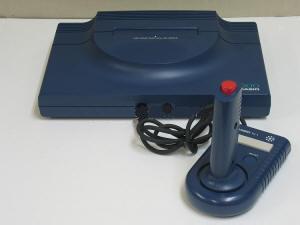 |
Powered by a Z80A micro-processor at 3.579 MHz with 2Kb of RAM, this engine was able to display games at a resolution of 256 x 192
pixels in 8 colors. Games were released on cartridges approximately the size of Nintendo Famicom carts. A total of 15
games were released for this system, mostly ports of earlier Casio releases for MSX compatible computers including Pooyan, Amidar,
Tutankhamon and Dig-Dug. Overall video quality is comparable to the ColecoVision. Game control is driven through a solid
joystick featuring one (1) fire button at the top of the it along with a 'start', 'select' and a large auxiliary button at its base
(packed in with the system). Casio also produced the PV-2000 in December 1983, which was a computer version of the PV-1000.
Both the PV-1000 and PV-2000 joysticks are compatible though the game cartridges are not.
Overall, the Casio PV-1000 was a below average system when it debuted and met its demise quickly. This is an extremely rare item
and only recommended for the ultra-serious console collector. This console was released solely in Japan for a short period of
time. These systems are exceptionally pricey to acquired due to its limited run and short shelf life. Be prepared to
invest heavily if you do wish to pursue - games are just as scarce and pricey.
|
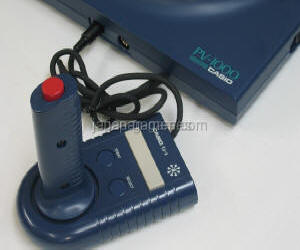 |
 MODELS MODELS
Officially licensed releases |
|
Casio PV-1000 |
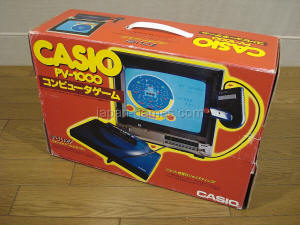 |
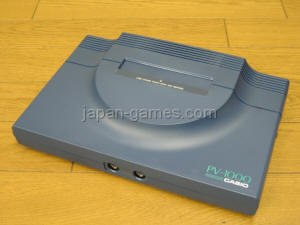 |
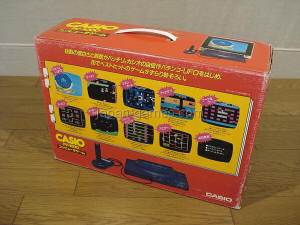 |
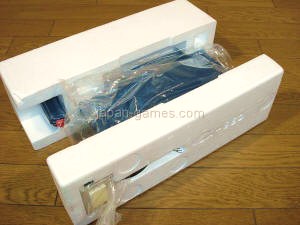 |
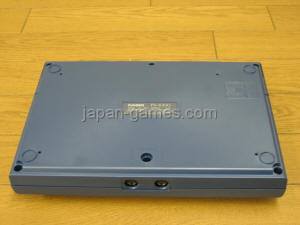 |
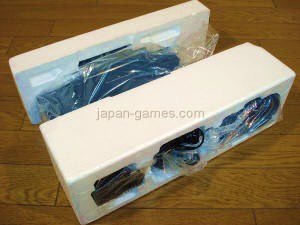 |
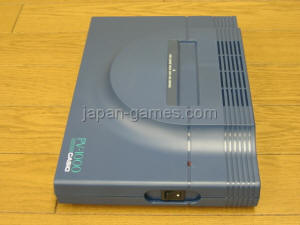 |
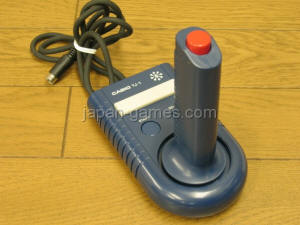 |
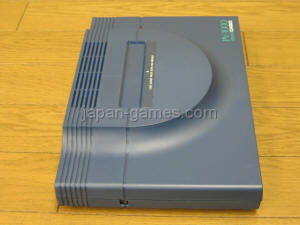 |
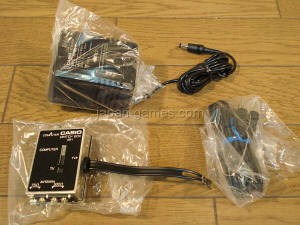 |
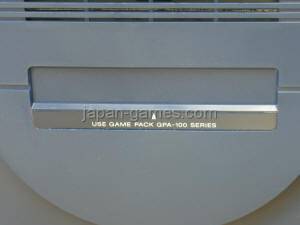 |
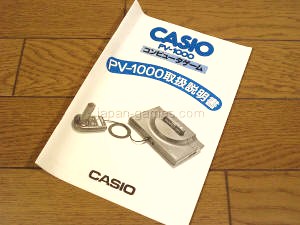 |
|
|
Casio PV-2000 (personal computer) |
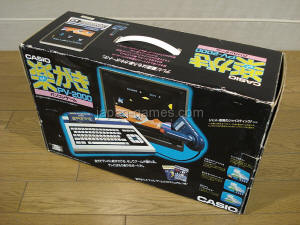 |
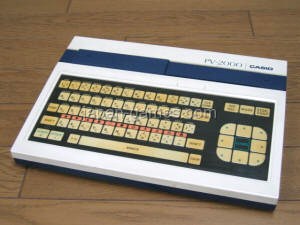 |
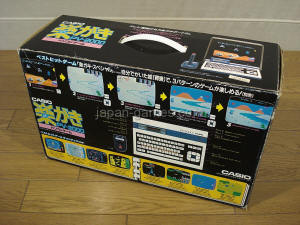 |
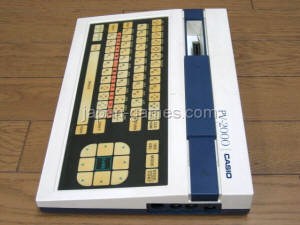 |
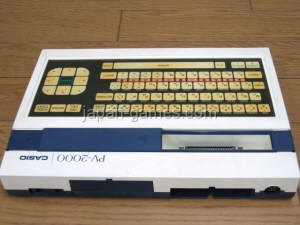 |
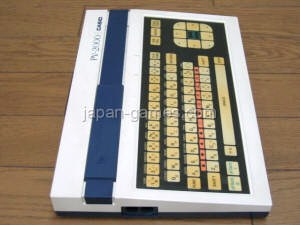 |
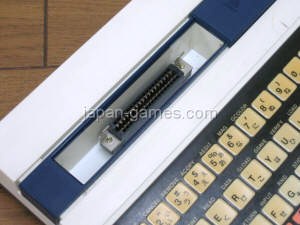 |
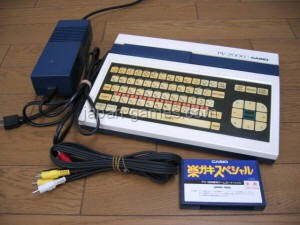 |
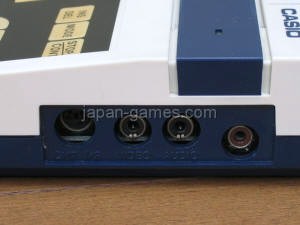 |
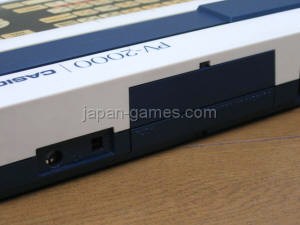 |
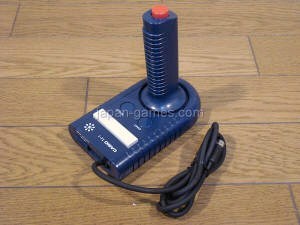 |
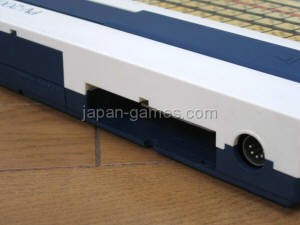 |
|
Above images courtesy of our good friend Eric at Japan-Games.com |
|
|
 CLONES CLONES
Non-licensed hardware releases |
No clones were released for this system.
|
 CONSOLE RATINGS CONSOLE RATINGS
by Marriott_Guy |
|
Consoles are rated based upon the available technology at the time of its release. A 10 point scale is utilized, with 10 being
excellent. |
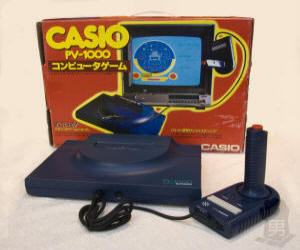
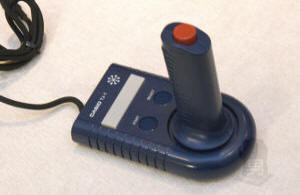
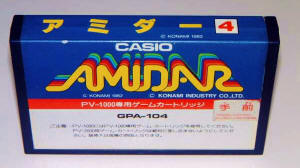 |
| CRITERIA |
RATING |
NOTES & COMMENTS |
| Console Design |
08 |
I love the sleek,
minimalistic look of the PV-1000. This no-nonsense approach enables easy operation. My only criticism may be
the location of the two controller ports, which could have been spaced further apart. |
| Console Durability |
08 |
With less bells and
whistles to become damaged through time, the PV-1000 is a very hearty console. |
| Controllers |
07 |
The joystick is well
constructed, but the top joystick button may be a little difficult for some gamers to push due to the large size of the
controller. |
| Graphics |
05 |
Though graphically
presented well, game play seems much slower when compared to comparable titles of the era. |
| Audio |
03 |
The PV-1000 again falls
short in this category, producing below average audio across three sound channels. |
| Media |
07 |
Hard to go wrong with the
cartridge, especially when it could hold 32K of programming data (which was not at all bad for that time period). |
| Gamer Value |
01 |
Even if the games and
system were affordable, the gaming experience is less than desirable compared to those already offered during this
generation. |
| Collector Value |
09 |
These systems are rare and
extremely pricey. Due to its limited run, these are highly desirable amongst collectors. The packaging is
rather fragile, so do not expect this aspect of the console to be pristine. |
|
 FORMAT, PACKAGING & GENERAL INFO FORMAT, PACKAGING & GENERAL INFO
Interesting facts on software for this system |
|
Software for the Casio PV-1000 was distributed in the ROM cartridge format. |
Sample Game Play
|
Casio PV-1000 Game Boxes
     
      
|
|
|
 SCREENSHOTS SCREENSHOTS
Captured in-game images |
Amidar
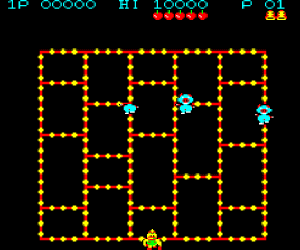 |
Dig-Dug
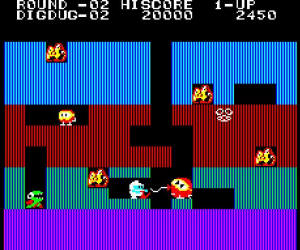 |
Dirty Chameleon
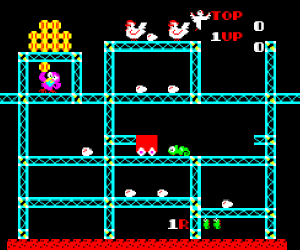 |
Excite Mahjong
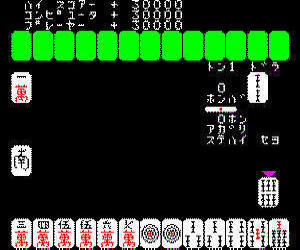 |
Fighting Bug
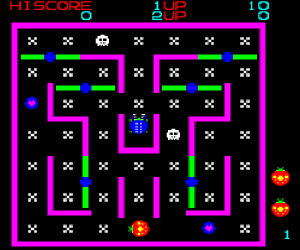 |
Naughty Boy
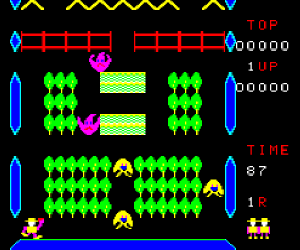 |
Pachinko UFO
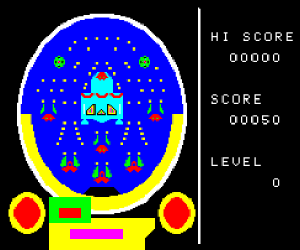 |
Pooyan
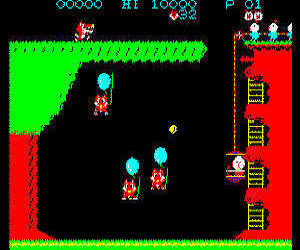 |
Space Panic
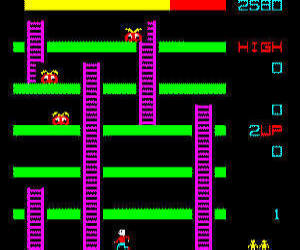 |
Super Cobra
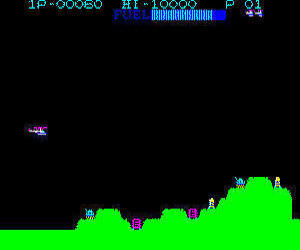 |
Turpin
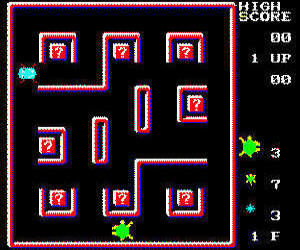 |
Tutankham
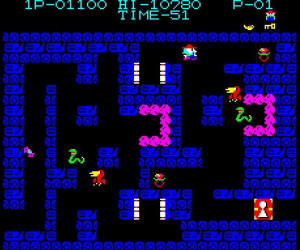 |
Warp & Warp
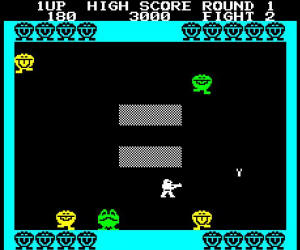
|
 |
|
|
 EMULATION EMULATION
First and third party system emulators |
MESS
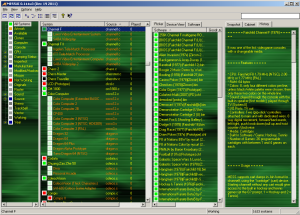 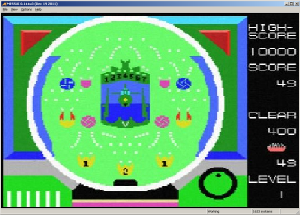
MESS (Multi-Emulator Super System) is a DOS based emulator capable of running many
systems including this one. It has a Windows based GUI
and is extremely user friendly.
|
 SPECS & MANUALS SPECS & MANUALS
For the hardware enthusiasts out there - all the detail you\we love. |
| Processor Type |
Processor
Speed |
Other
Processor Information |
RAM \ Video RAM |
| Z80A Micro-Processor (D780C-1) |
3.579 MHz |
D65010G031 (for video & sound) |
4 KB \ 16 KB |
|
Screen Resolution
|
Color Palette
|
Polygons \ Sprites
|
Audio |
| 256 x 192 |
8 colors |
32 sprites |
3 Channel |
|
Media Format
|
Media Capacity
|
Games Released
|
Other Supported Formats
|
|
Cartridge |
32K |
15 |
None |
|
Internal Storage
|
External \ Removable Storage
|
Game Controllers
|
Other Game \ Peripheral Devices
|
|
None |
None |
Joystick, Fire Button,
Start\Select buttons, Aux button |
None |
| Controller Ports |
Network Ports |
Other Ports
|
Audio \ Video
|
|
Two (2) |
None |
None |
RF |
|
Power Supply - External
|
Other Outputs
|
Other Details \ Notes
|
Input: AC 100V, 50\60Hz, 15VA
Output: DC 15V, 500mA |
None |
Channel 1\2 Switch |
| Manuals |
| Casio PV-1000 Owners Manual -
0.84 MB |
|
 OTHER
MEDIA OTHER
MEDIA
Peripherals, Promotions, Commercials, Brochures, Etc. |
|
Casio PV-2000 Television Commercial |
|
|
|
|
Casio PV-1000 & PV-2000 Advertisements |
 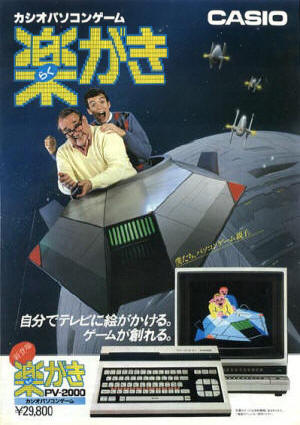 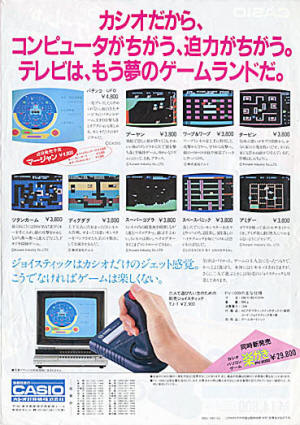
|
 WEB RESOURCES WEB RESOURCES
Highly recommended websites for this system |
Plogue R&D
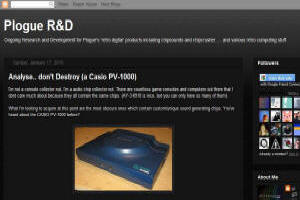
Modding a PV-1000 for Composite video |
Retro Games Kiko
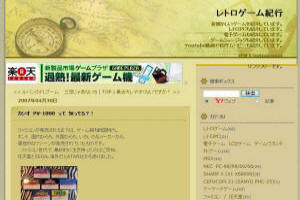
Game cartridge disassembly and analysis |
|
|









 2010s - NOTES
2010s - NOTES


 MODELS
MODELS























 CLONES
CLONES CONSOLE RATINGS
CONSOLE RATINGS


 FORMAT, PACKAGING & GENERAL INFO
FORMAT, PACKAGING & GENERAL INFO












 SCREENSHOTS
SCREENSHOTS













 EMULATION
EMULATION

 SPECS & MANUALS
SPECS & MANUALS OTHER
MEDIA
OTHER
MEDIA


 WEB RESOURCES
WEB RESOURCES

 DISCUSS
DISCUSS